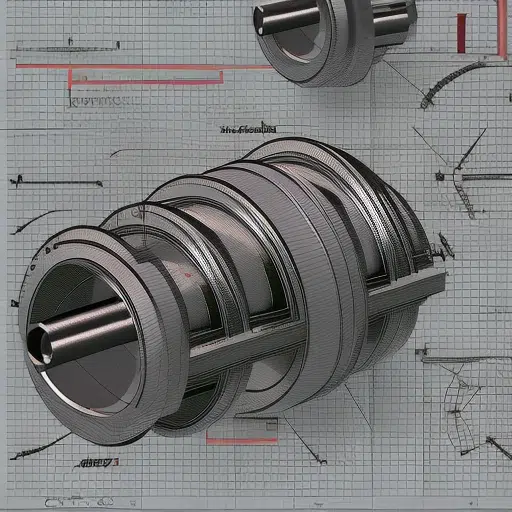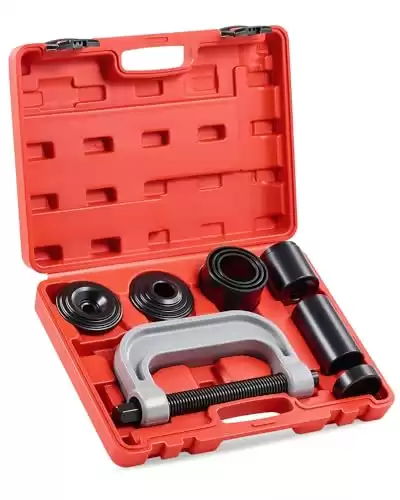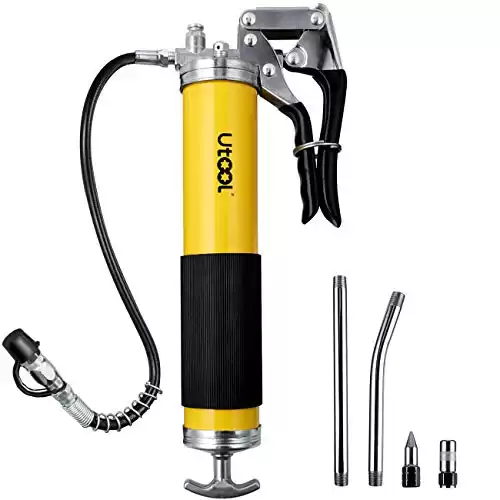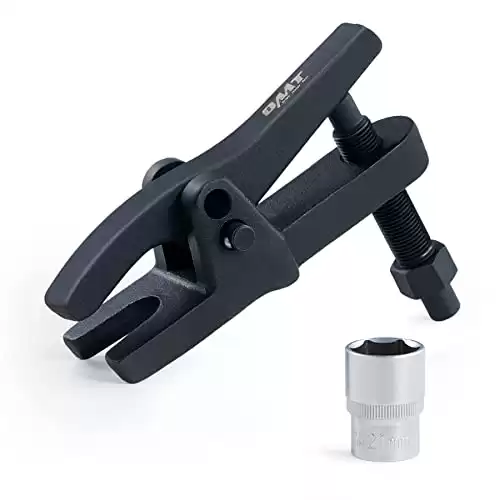
Have you been wondering about the symptoms of bad ball joints in your vehicle? Identifying such issues early is crucial for the smooth functioning of your vehicle’s suspension system, ensuring safer drives, and reducing unnecessary repair costs. In this article, we’ll highlight key symptoms indicating that your ball joints may be going bad, including unusual noises, tire wear patterns, vibrations, and handling issues. Understanding these signs will help you recognize problems sooner, schedule timely repairs, and maintain optimal vehicle performance.
Unusual Noises
One of the first symptoms that car owners might notice when ball joints start to wear out are unusual noises coming from the suspension. This could be a creaking, clunking, or snapping sound, especially when turning the steering wheel or going over bumps. These sounds are caused by the extra movement of the suspension components due to the worn-out ball joints.
How can I tell if my ball joints need greasing?
If your vehicle has greaseable ball joints and you’re noticing a creaking or squeaking sound when the suspension moves, or if it’s been a while since the last lubrication, it may be time to grease your ball joints. However, this should be part of regular vehicle maintenance following the guidelines in your vehicle’s manual.
The frequency of greasing ball joints can depend on the type of vehicle and driving conditions. However, a general rule of thumb is to lubricate them at every oil change or every 3,000 to 5,000 miles. Always refer to your vehicle’s maintenance manual for specific recommendations.
Distinct Sounds
The early signs of worn or loose ball joints often manifest as faint, intermittent clunking noises, seemingly emerging from a corner of your vehicle. These sounds may amplify when driving over bumps, dips, or around corners, growing louder and more frequent as the wear continues.
Irregular Tire Wear
Bad ball joints can lead to uneven tire wear, another easily observable symptom. If the ball joints are worn, the alignment of the wheels can be affected, leading to irregular tire wear patterns. Feathering, or the tread being more worn on one side than the other, is a common sign of bad ball joints.
Uneven Tire Wear
If the inner or outer edges of your front tires wear out faster than the rest, it may signify failing ball joints. A thorough inspection is crucial here since different patterns of tire wear could also indicate other issues, like under-inflation of your tires.
Pros of Lucas Oil Heavy Duty Grease:
- High-Temperature Resilience: It withstands extreme temperatures, staying pliable even in very low temperatures, which is excellent for varied climates.
- Versatility: Suitable for a broad range of applications, including automotive, agricultural, heavy-duty, and industrial.
- Superior Stability: Offers more stability than standard lithium greases, enhancing its durability and effectiveness.
- Water Resistance: Its virtually waterproof composition ensures it remains effective in wet conditions, preventing washout.
- Extreme Pressure Formulation: Contains additives that exceed OEM specifications, offering enhanced protection and performance.
Vibrations
Feeling vibrations through the steering wheel is another common sign of bad ball joints. When ball joints wear out, they can become loose within their housing, leading to vibrations that can be felt through the steering wheel, especially at higher speeds or during cornering.
Front End Shimmy
Loose or worn suspension components like ball joints can cause a front end shimmy, which triggers excessive vibrations when the vehicle is in motion. These unsettling tremors can be felt through the seat, steering wheel, or brake pedal.
Handling Issues
One of the more severe symptoms of bad ball joints is handling issues. These could include wandering steering, which feels as if the car is drifting to one side or the other, or unstable steering, which feels loose. This happens because the worn-out ball joints are unable to hold the suspension components firmly, affecting the steering alignment.
Steering Troubles
Deteriorating ball joints can lead to sloppy or stiff steering. You might notice a vibration in the steering wheel when driving on a straight, level road, or your vehicle may drift to the right or left over bumps – signs of potential ball joint wear.
The Potential Consequences of Neglecting Deteriorating Ball Joints
Choosing to overlook the early symptoms of failing ball joints may not be advisable. The escalated wear of these components can result in the disconnection of the stud from its housing. This situation can subsequently impair the vehicle’s steering capabilities, presenting a significant challenge in maintaining control during motion. While this circumstance is rather serious, it underscores the importance of proactive and timely intervention in potential ball joint issues. It is highly recommended that any suspected issues with ball joints be promptly evaluated by a qualified automotive technician.
Choosing to overlook the early symptoms of failing ball joints may not be advisable. The escalated wear of these components can result in the disconnection of the stud from its housing. This situation can subsequently impair the vehicle’s steering capabilities, presenting a significant challenge in maintaining control during motion. While this circumstance is rather serious, it underscores the importance of proactive and timely intervention in potential ball joint issues. It is highly recommended that any suspected issues with ball joints be promptly evaluated by a qualified automotive technician.
While the allure of DIY car repair can be tempting, ball joint maintenance should be left to professionals in most cases. Technicians will inspect the ball joints and other parts of the suspension system for wear, tear, and rust buildup. Depending on the diagnosis, replacements might be recommended, followed by a thorough check of the vehicle’s alignment.
Ultimately, regular inspection and prompt attention to any unsettling symptoms are essential to maintain your vehicle’s ‘harmony’. Any suspension issue, like a faulty ball joint, warrants serious attention to avoid potentially dangerous driving conditions. Ensure that the symphony of your vehicle’s movement remains harmonious by addressing ball joint issues at their earliest signs.
FAQs on Symptoms of Bad Ball Joints: Signs and Remedies

What are the symptoms of bad ball joints?
Some common signs of faulty ball joints include strange noises coming from the front suspension, particularly clunking or squeaking, an unsteady or wandering steering wheel, uneven tire wear, and noticeable vibrations while driving.
How dangerous is it to drive with bad ball joints?
Driving with faulty ball joints can be hazardous, as they play a vital role in your vehicle’s steering and suspension. If they fail completely, you may lose control of the vehicle. It’s important to have them checked if you notice any of the aforementioned symptoms.
How often should I replace the ball joints on my car?
The replacement frequency varies depending on the vehicle’s make and model, driving conditions, and the quality of the roads. However, it’s good practice to have them inspected regularly, such as during routine oil changes or service inspections.
What happens if a ball joint breaks while driving?
If a ball joint breaks while driving, the wheel essentially becomes free of the car’s suspension. This can cause loss of vehicle control, which may lead to an accident. It’s essential to have any suspected issues evaluated by a professional promptly to avoid this dangerous situation.
How long does it take to replace ball joints?
Replacing ball joints can take several hours, depending on the vehicle’s model and the number of joints to be replaced. It’s a task usually best left to a professional mechanic due to the specialized tools and experience required.
Can I replace ball joints by myself?
While it’s technically possible to replace ball joints yourself, it’s a complex task that requires a high level of mechanical knowledge and specific tools. Unless you have significant mechanical experience, it’s usually recommended to let a professional handle this job.
What can I do to extend the life of my ball joints?
Regular servicing and avoiding aggressive driving can help extend the life of your ball joints. Using high-quality lubricants also assists in maintaining the health of your ball joints. If you live in an area with harsh road conditions or if your vehicle often carries heavy loads, more frequent checks may be necessary.
How are bad ball joints diagnosed?
Bad ball joints can be diagnosed through a combination of physical inspection and road testing. A mechanic might check for play in the ball joints, inspect the rubber boots for damage, or listen for the characteristic clunking noise. A test drive can also reveal symptoms like steering wander or vibrations.
How much does it cost to replace bad ball joints?
The cost of replacing ball joints can vary significantly depending on the vehicle’s make and model and your location. On average, you can expect to pay between $200 and $450 per ball joint. This cost typically includes parts and labor.
Are ball joints covered under warranty?
Most new vehicles come with a warranty that covers defective parts, which can include ball joints. However, wear and tear from normal use is typically not covered. It’s best to check with your vehicle manufacturer or dealer for specific warranty details.
Pros of Lucas Oil Heavy Duty Grease:
- High-Temperature Resilience: It withstands extreme temperatures, staying pliable even in very low temperatures, which is excellent for varied climates.
- Versatility: Suitable for a broad range of applications, including automotive, agricultural, heavy-duty, and industrial.
- Superior Stability: Offers more stability than standard lithium greases, enhancing its durability and effectiveness.
- Water Resistance: Its virtually waterproof composition ensures it remains effective in wet conditions, preventing washout.
- Extreme Pressure Formulation: Contains additives that exceed OEM specifications, offering enhanced protection and performance.
Is it necessary to get an alignment after replacing ball joints?
Yes, it’s recommended to get a wheel alignment after having ball joints replaced. The ball joint replacement process can alter the vehicle’s alignment, which could lead to uneven tire wear or steering issues if not corrected.
Can bad ball joints cause a vibration while driving?
Yes, one of the common symptoms of bad ball joints is a vibration felt in the steering wheel. This can happen because the worn-out ball joint introduces play in the steering system, leading to vibrations that are particularly noticeable at high speeds.
What’s the difference between upper and lower ball joints?
The primary difference between upper and lower ball joints is their location on the vehicle’s suspension. Upper ball joints are located at the top of each wheel’s spindle, while lower ball joints are located at the bottom. Depending on the vehicle design, one may wear out faster than the other.
Can I replace only one ball joint at a time?
While it’s possible to replace just one ball joint, mechanics often recommend replacing them in pairs (both upper or both lower joints) on the same axle. This is because if one has worn out, the other is likely not far behind.
Can I use grease as a solution for bad ball joints?
While greasing ball joints can help prolong their lifespan and keep them functioning smoothly, it’s not a remedy for already damaged or excessively worn ball joints. Once a ball joint has started to exhibit symptoms of failure, it is typically too late for maintenance and the joint usually requires replacement.
Can over-greasing ball joints cause problems?
Yes, over-greasing can potentially cause issues. It can lead to excessive pressure that might rupture the protective boot, allowing dirt and debris to enter and damage the joint. Therefore, it’s crucial to apply the appropriate amount of grease.






